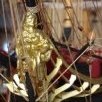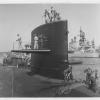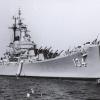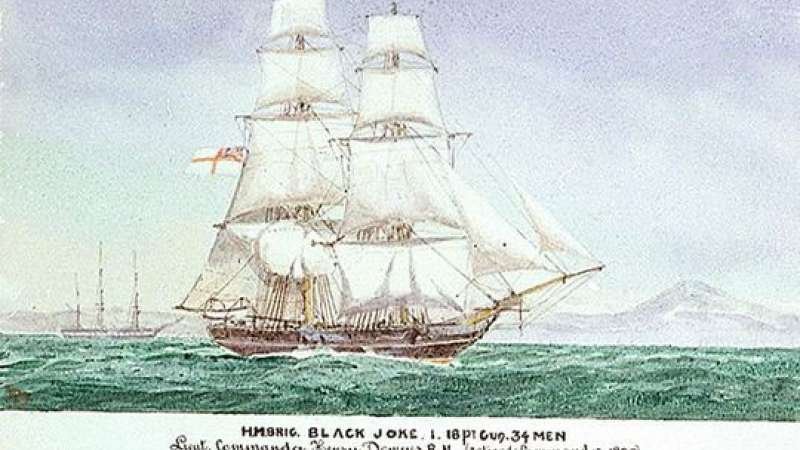-
Posts
38 -
Joined
-
Last visited
About Essayons
- Birthday December 22
Profile Information
-
Gender
Male
-
Location
Bryan Texas
-
Interests
History, naval history, ships (all eras)
Recent Profile Visitors
-
 Obormotov reacted to a post in a topic:
Harold Hahn method
Obormotov reacted to a post in a topic:
Harold Hahn method
-
 Obormotov reacted to a post in a topic:
Harold Hahn method
Obormotov reacted to a post in a topic:
Harold Hahn method
-
 Obormotov reacted to a post in a topic:
Harold Hahn method
Obormotov reacted to a post in a topic:
Harold Hahn method
-
 mtaylor reacted to a post in a topic:
Harold Hahn method
mtaylor reacted to a post in a topic:
Harold Hahn method
-

Harold Hahn method
Essayons replied to Essayons's topic in Building, Framing, Planking and plating a ships hull and deck
Yes Mark! That was my initial question on Hahn's framing method, the upside down method, but mixed with conventional frame method of cutting out each futtock and assembling them.. I think it will take some study to build the jig pattern. If it were a RN subject where the upper futtocks varied in thickness(sided) and relative position to each other frame(use the HMS Euryalus 1803) for example. On the other hand, I have the Ancre book/plans for the Hermoine. Their drawings show a constant room and space of ~24"/12" all the way up to the upper futtocks, so making a Hahn-syle jig could be very feasible. Randy -
 Essayons reacted to a post in a topic:
Harold Hahn method
Essayons reacted to a post in a topic:
Harold Hahn method
-
 Justin P. reacted to a post in a topic:
Harold Hahn method
Justin P. reacted to a post in a topic:
Harold Hahn method
-
 Justin P. reacted to a post in a topic:
Harold Hahn method
Justin P. reacted to a post in a topic:
Harold Hahn method
-
 Justin P. reacted to a post in a topic:
Harold Hahn method
Justin P. reacted to a post in a topic:
Harold Hahn method
-
 mtaylor reacted to a post in a topic:
Harold Hahn method
mtaylor reacted to a post in a topic:
Harold Hahn method
-
 Bob Cleek reacted to a post in a topic:
Harold Hahn method
Bob Cleek reacted to a post in a topic:
Harold Hahn method
-

Harold Hahn method
Essayons replied to Essayons's topic in Building, Framing, Planking and plating a ships hull and deck
Yeah Mark that's what I was contemplating; extending the frame tops but still building the frames in the conventional manner to reduce wood waste..Also looking at the way DVM 27 describes some French builders.. The main reason as I already mentioned is that the Hahn frame can be put down in the box to protect it if work gets interrupted and that it stays relatively stable... just pondering my options! -
 Canute reacted to a post in a topic:
Degradation of lead and Britannia fittings
Canute reacted to a post in a topic:
Degradation of lead and Britannia fittings
-

Harold Hahn method
Essayons replied to Essayons's topic in Building, Framing, Planking and plating a ships hull and deck
mtaylor, I fully agree. The style keeps the model very sturdy, much more than the traditional "shipyard" configuration. It seems to me that making a framing jig would be the largest hurdle. -

Degradation of lead and Britannia fittings
Essayons replied to John Allen's topic in Metal Work, Soldering and Metal Fittings
If you are able, cast your parts in Type R pewter (no lead). It flows well but it melts at 575 degrees F which will shorten your mold life. I believe archivists classify as some pewters as archive grade. -
Okay I pose the question to the forum: Has anyone built a plank on frame model with as designed scantlings but in the Harold Hahn method? The downside is the extra wood required. The upside is that the hull while under construction, remains stable and protected. This alone is a big plus since I might get to work on it constantly. If there is a build log that to which one could direct me that would be great.
-

Alaskan Cedar
Essayons replied to Essayons's topic in Building, Framing, Planking and plating a ships hull and deck
Thanks all for the repllies. Mtaylor, yes I think I will look into maple and pear depending on the application, saving boxwood for carving. -
 Essayons reacted to a post in a topic:
Alaskan Cedar
Essayons reacted to a post in a topic:
Alaskan Cedar
-

Which flag(s) would a British Navy ship fly in 1830s/40s?
Essayons replied to RPaul's topic in Nautical/Naval History
Here's a picture of the famous HMS Black Joke which was in the West Africa Squadron..white ensign. Curious what fleet they were under. -

Which flag(s) would a British Navy ship fly in 1830s/40s?
Essayons replied to RPaul's topic in Nautical/Naval History
It sounds like she was in the West Africa Squadron (Preventative Squadron). They caught a lot of slavers between Africa and Brazil. -

Which flag(s) would a British Navy ship fly in 1830s/40s?
Essayons replied to RPaul's topic in Nautical/Naval History
Either a red, white, or blue depending on what squadron she was assigned. Each fleet had these squadrons. Exact areas and how they changed and were adjusted over time is my question as I have a query on this topic. This until 1864 when the white ensign became the royal navy ensign, blue for reserve and red for merchants/civilian. Not sure if your ship was in the West Africa Squadron. -
Curious if anyone has a map of the RN squadrons(red, white, blue) area of responsibility from about 1750 to 1865 which were assigned to their respective fleets, or they might be stand alone squadrons? I would like a more detailed depiction (and any changes)..R.C.
-
Hello everyone! I've been a member of this site before and modeling most of my life. I'm trying to compile a group list of modelers in Texas. This would be could be shared with each other(or not), but would serve as a tool to get everyone together to exchange ideas, etc. almost like an unofficial "club". Please PM me and we'll go from there. Randy
-
Essayons started following uss frolick
-
 Essayons reacted to a post in a topic:
Pinrail rope coils
Essayons reacted to a post in a topic:
Pinrail rope coils
-

ancre Le Fleuron 1729 by rekon54 - 1:24
Essayons replied to rekon54's topic in - Build logs for subjects built 1501 - 1750
Some use polyurethane as well. -

ancre Le Fleuron 1729 by rekon54 - 1:24
Essayons replied to rekon54's topic in - Build logs for subjects built 1501 - 1750
Giorgio, what do you use for a finish on the wood? Linseed oil/tung oil??
About us
Modelshipworld - Advancing Ship Modeling through Research
SSL Secured
Your security is important for us so this Website is SSL-Secured
NRG Mailing Address
Nautical Research Guild
237 South Lincoln Street
Westmont IL, 60559-1917
Model Ship World ® and the MSW logo are Registered Trademarks, and belong to the Nautical Research Guild (United States Patent and Trademark Office: No. 6,929,264 & No. 6,929,274, registered Dec. 20, 2022)
Helpful Links
About the NRG
If you enjoy building ship models that are historically accurate as well as beautiful, then The Nautical Research Guild (NRG) is just right for you.
The Guild is a non-profit educational organization whose mission is to “Advance Ship Modeling Through Research”. We provide support to our members in their efforts to raise the quality of their model ships.
The Nautical Research Guild has published our world-renowned quarterly magazine, The Nautical Research Journal, since 1955. The pages of the Journal are full of articles by accomplished ship modelers who show you how they create those exquisite details on their models, and by maritime historians who show you the correct details to build. The Journal is available in both print and digital editions. Go to the NRG web site (www.thenrg.org) to download a complimentary digital copy of the Journal. The NRG also publishes plan sets, books and compilations of back issues of the Journal and the former Ships in Scale and Model Ship Builder magazines.





